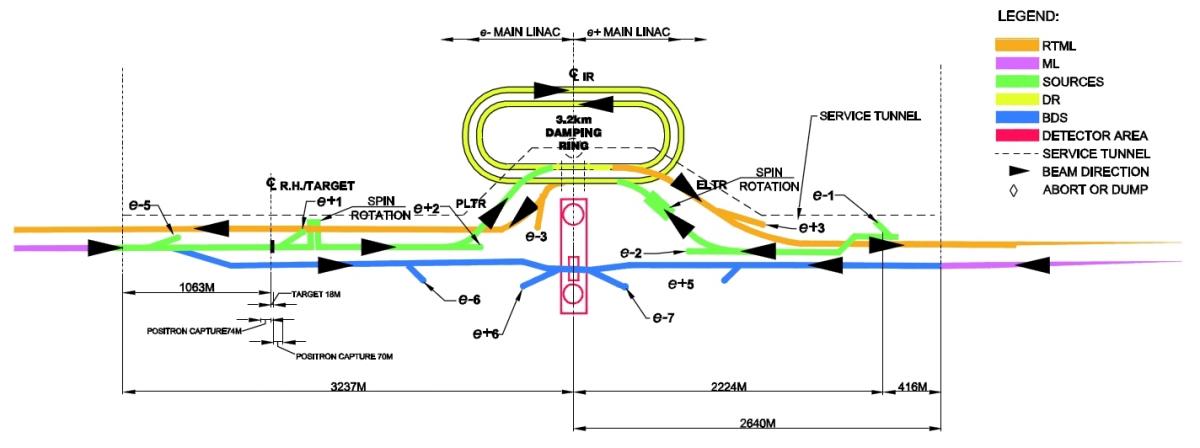Director's Corner
14 January 2010
 Barry Barish |
Evolving the ILC baseline
Over the past year, the ILC project managers have led a focussed effort to assess the ILC baseline configuration that is documented in the Reference Design Report (RDR) and as a result have developed a set of proposed baseline changes that are aimed at reducing costs and improve the technical design. The SB2009 Proposal Document outlines a set of proposed changes, includes descriptions of each change, as well as some discussion of the pros and cons. The first step in evaluating this proposal was a review last week in Oxford, UK, by our Accelerator Advisory Panel (AAP), an internal committee that advises me on technical and management issues. I will discuss the AAP recommendations in a forthcoming column, once they deliver their report to me. Today, I address some of the general features of the proposal.
To a large extent the original motivation for this study was to find major cost savings relative to the RDR. As stated in the proposal document, “The adopted approach to re–baselining is based on an assumption that the RDR design – although sound – is both conservative in many of its design decisions, relatively immature from a detailed engineering standpoint, and is "performance–driven" as opposed to cost optimised.”
But, a key result of this study is that, even if we adopt all of SB2009, it would result in cost savings of only 10–15 percent, and these changes could even introduce some associated performance degradation and some areas of increased technical risks. We can immediately draw as a very important conclusion of this intensive one–year study the observation that the RDR is already close to being a cost–to–performance optimised design. Therefore, we should be very selective and only adopt changes that on balance improve performance, reduce risks, make a better overall design or make cost savings without significantly degrading the other factors.
The report proposes a set of major changes characterised listed below:
- A main linac length consistent with an average accelerating gradient of 31.5–MV/m and maximum operational beam energy of 250–GeV, together with a high–level RF distribution scheme which optimally supports a spread of individual cavity gradients.
- A single–tunnel solution for the main linacs and ring–to–main–linac (RTML), with two possible variants for the high–level RF (HLRF), either a Klystron cluster scheme (KCS) or a distributed RF source scheme (DRFS).
- Undulator–based positron source located at the end of the electron main linac (250 GeV), in conjunction with a quarter–wave transformer as capture device.
- A lower beam–power parameter set with the number of bunches per pulse reduced by a factor of two (number of bunches = 1312), as compared to the nominal RDR parameter set.
- Reduced–circumference damping rings (~3.2 km) at 5 GeV with a 6–millimetre bunch length
- Single–stage bunch compressor with a compression ratio of 20.
- Integration of the positron and electron sources into a common "central region beam tunnel", together with the BDS, resulting in an overall simplification of civil construction in the central region.
Because of the modest cost savings from these changes, it will take care and study to decide which ones to adopt now, which might be deferred for later consideration and which ones to reject. It should be noted that this will be especially difficult because many of the changes are interrelated. I should emphasise that the study has been extremely valuable beyond the changes it proposes, because the process has significantly refined our understanding of the ILC design, and several interesting new ideas have been brought forward.
One of our main objectives during the Technical Design Phase will be to balance and optimise cost, risk and performance. It would be most straightforward in that process to adopt this set of interrelated changes as they are proposed. However, due to the subtleties and difficulties of evaluating which changes to adopt, we may decide to take a more systematic, stepwise approach to evolving the incorporating changes to the RDR baseline. Although such an approach will complicate the design process in the sense that it will create a moving target, the final result may well be better. In any case, we now must grapple with the problem of how with our limited resources to move forward with this proposal. In this respect, the AAP assessments and recommendations will provide crucial input.
-- Barry Barish
